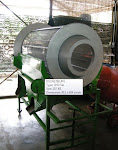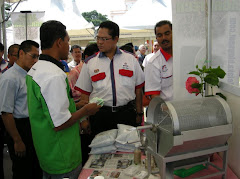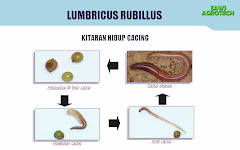
Why are Earthworms Important for Soil Fertility and Sustaining Agriculture?
Earthworms play an important role in the creation of healthy, productive, "living" soils. Basically, earthworm feeding and burrowing activities incorporate organic residues and amendements into the soil, enhancing decomposition, humus formation, nutrient cycling, and soil structure development. Earthworm burrows persist as macropores which provide low resistance channels for root growth, water infiltration, and gas exhcange.1
The major benefits can be summarized into the following three major categories:
Biological: The earthworm is essential to composting. They feed on organic matter and convert it into rich humus, a medium vital to the growth of healthy plants. This is achieved by the worm's actions of pulling down below, any organic matter deposited on the soil surface (e.g., leaves, manure, etc.) either for food or when it needs to plug its burrow. Once in the burrow, the worm will shred the leaf and partially digest it, then deposit their castings. Worm castings contain high concentration of organic material, silt, clay and is rich in many soil nutrients such as nitrogen, sulphur, potash, phosphorus, calcium, magnesium, etc. Worm castings are also rich in growth hormones, vitamins and act as a powerful biocide against disease and nematodes.2 A study found that earthworms in apple orchards can be an important mechanism for preventing outbreaks of scab fungus.3
Chemical: The earthworm also ingests other soil particles that are small enough into its "crop" wherein minute fragments of grit grind everything into a fine paste which is then digested into the stomach. When the worm excretes this in the form of catings, a erfectly balanced selection of minerals and plant nutrients is made available in an accessible form. Investigations in the US show that fresh earthworm castings are 5 times richer in available nitrogen, 7 times richer in available phosphates, and 11 times richer in available potash than the surrounding upper 6 inches of soil.4 Other studies also suppor the importance of the earthworm:
Earthworms in a pasture soil produce castings that contain 73 percent of the nitrogen found in the ingested litter, including both the importance of earthworms in incorporating litter nitrogen into the soil.5
Earthworms increase the amount of nitrogen mineralized from organic matter in soil.6
Nitrogen-fixing bacteria are ofund in the gut of earthworms and in the earthworm castings, and higher nitrogenase activity, meaning greater rates of N-fixation, are found in castings when copared with soil.7
Earthworms can acumlate certain heavy metals, industrial effluents, arious biocides, pesticides, and their residues.8
These studies explain why it pays the farmer or gardener to keep worm populations high. Click here for more information regarding Earthworm Castings Benefits.
Physical: As earthworms burrow through the soil, they leave behind tunnels that open up passageways for air and water, thus, creating a multitude of channels which allow the processes of both aeration and drainage to occur. The soil becomes loose, porous, and unsurpassed in fertility. Permaculture co-founder Bill Mollison stated that by sliding in their tunnels, earthworms "act as an innumerable army of pistons pumping air in and out of the soils on a 24-hour cycle (more raidly at night).9 It was also found that earthworms like the Nightcrawler, "can burrow through compacted soil and penetrate plough pans, creating channels for drainage, aeration, and root growth."10
Several studies ahve reported the overall benefits of the earthwormand its role in sustaining agriculture. That is, that these incredible earthworms are a vital component in the living biosystem that is healthy "living" soil. These studies found that the introduction of earthworms to area not previously populated has led to improvements of soil quality and productity in New Zealand grassland11; on drained Dutch polders12; in heathland in Ireland13; and in mining spoils in the US.14
The African Nightcrawler earthworms are excellent for revitalizing the soil and sustaining agriculture. For the last two decades, the African Nightcrawler has played a major role in solid waste management in Southeast Asian nations, including be a major character of vermicomposting in the Philippines.
Why Use Cocoons?
While worms are adaptable, worms may die when removed fro their soil and transported to new environments. However, earthworms that hatch in altered environments are able to adapt better to the new environment.15 Thus, using cocoons (or worm eggs) is a much more efficient and effective way of increasing the worm population in your farm or garden.
Cocoon Management
The cocoons are opaque, oval-shaped to a small point at each end, and very small - not much bigger than 1/8" in diameter. Because the cocoons are moist, the soil particles will stick to them, making them look like the particles of dirt. They will be difficult to see. Worm cocoons can be spread over the land at any time of year. However, the best time to introduce worm cocoons outside is during the spring, summer, or autum when night time temperatures are above freezing and after the ground has been tilled or cultivated.
Note: Worms are very adaptive to different soil types. They thrive best in soils that receive annual applications of organic matter such as grass clippings, compost, or manure. If your soil is depleted, till in organic matter before applying the worm cocoons. The organic matter will serve as food and help retain moisture - an important requirement for both plants and worms. Scatter the worm cocoons and medium over the top of the soil in an 8' x 10' area. If possible, generally rake them into the tope 2 - 3 inches of soil. Water the soil thoroughly and keep it moist. Worms require moisture to breathe. If the soil dries out during the first month, you could lose some of your hatched worms.
Worm cocoons hatch with 2-3 weeks when the soil tempurature reaches 70 degrees. Baby worms are small and whitish-pinkish when they leave the cocoon. Each cocoon egg produes 2-7 worms. Within 2-3 days, they begin to change color to eventually match their soil surroundings. Worms in a clay soil will be gray in color; worms in rich organic soil will be reddish purple. In a short 3 months, they will reach maturity and will begin to reproduce a second generation of cocoons. Worms burrow deep into the earth below the frost level. If your area of experiences severe winters without snow cover,the worms may have a difficult time finding unfrozen soil. Mulch your soil with straw, grass clippings, or leaves, or grow a green manure-like clover to help keep the soil from freezing. Apply the mulch in the autumn before frost penetrates the soil.
The successful management of worms depend on different factors. The heavy applications of inorganic fertilizers may cause immediate reductions in earthworm abundance.16 Furthermore, earthworms are not favored by tillage, and in general the greater the density and frequency of disturbance, the lower the population density or biomass of the earthworms.17 That is, earthworms are dependent on moderate soil moisture content, and cultivation tends to have a negative effect on earthworms by decreasing soil moisture.18 However, earthworm abundance increased in plots that received disk cultivation, or no-till treatment.19 Adding organic matter to the soil helps increase the worm popluations. A study in Denmark found that manure was optimal for increased earthworm abundance and biomass.20 Thus, organic mulches are impotant as they enhance earthworm habitat by moderating microclimate and supplying a food source.21
Tips for Managing Earthworm Population
One way to help increase your worm population is to set aside a small area of land on a farm or garden to be managed exclusively as an earthworm reservoir. If needed, the soil could be limed to bring it near pH7. A crop could be grown and cut periodically to provide an organic mulch as food and physical cover. In this area, the earthworm could be established and reproduced. The earthworm would then travel to other sections of the field. For example, a Nightcrawler worm can travel at least 19 meters (approximately 62 feet) on the soil surface in the course of one evening froay.22
If there is a specific section of land that you want to incrase the worm population, you can also directly introduce the worms by transferring blocks of soil (for example, one cubic foot each block) from the worm reservoir to the targeted farm area of land. In summary, to achieve optimal results in increasing the earthworm population address the following factors:
Ample organic matter is supplied to the soil where earthworms are being introduced.
The soil has sufficient moisture.
Physical and chemical disturbances of the soil are minimized.




































